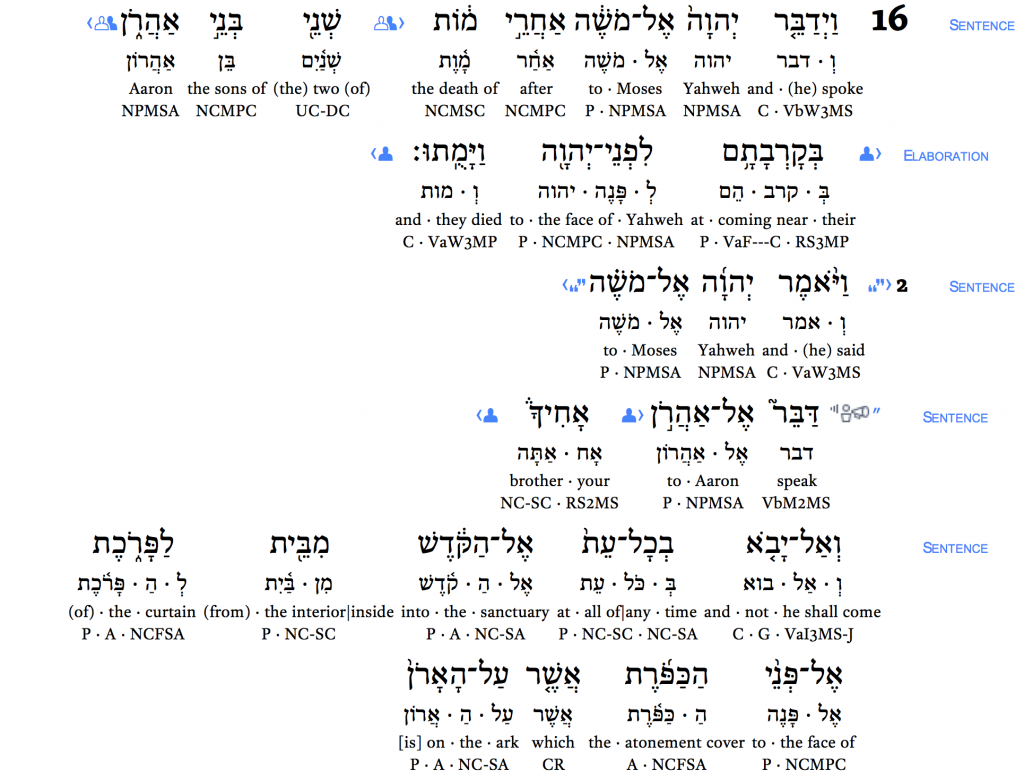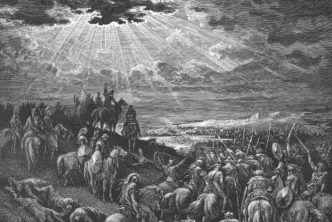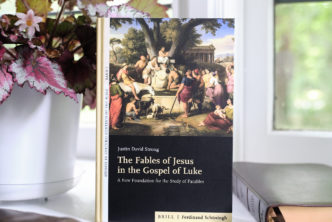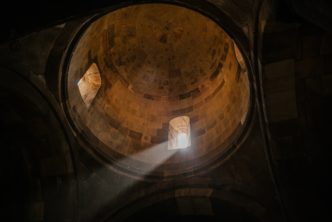
This post is by Josh Westbury, a scholar-in-residence at Faithlife.
In addition to being a Hall of Fame baseball player, Yogi Berra is perhaps remembered most for his pithy witticisms, affectionately known as “Yogi-isms”. These short sayings often strike a humorous tone by playing on obvious contradictions or redundancies. A couple of my personal favorites are: “Sometimes you can observe a lot just by watching,” and “It’s deja-vu, all over again.” These two Yogi-isms are funny because they break one of the basic rules of language: avoid redundancy.
As children we naturally learn to avoid redundancy when speaking or writing—for the simple reason that redundancy can make it hard for people (our “addressees”) to process what we are trying to say. But, as Yogi has taught us, when used intentionally, redundancy can have a powerful and even comic effect. In fact, when we pay close attention, we find that we use redundancy more often than we might expect.
For example, we sometimes use a redundant device called Tail-Head Linkage when we tell stories. If we’re telling scary stories, we might say something like, “I heard a sound in the basement, so I walked downstairs. And as I was walking down the stairs…” Notice how the action at the end of the first sentence (the tail) is repeated at the beginning of the second sentence (the head). The redundant information slows down the story in order to build suspense. This has the effect of signaling that something important and surprising is about to occur. In fact, the biblical writers use the power of redundancy in the same way to create similar effects. The writer of Genesis uses this device to build tension in the story of Joseph during his conversation with Potiphar’s wife.
Another use of redundancy occurs with a device called “quotative frames.” Quotative frames are used in narrative to introduce reported speech of some kind, be it direct or indirect. We can think of them as signposts indicating a transition from narrative to speech and from one speech to another. Here are a few examples of English quotative frames marked in bold type:
- And he said ” . . . “
- Then she was like ” . . . “
- And all of the sudden, she goes ” . . . “
InHebrew, verbs of speaking are typically used as quotative frames. For instance, in Genesis 32:26-28, the verb of speaking וַ־־יֹּאמֶר (“and he said…”) is used as a quotative frame:
 |
27. Then he said, “Let me go, for the day is breaking.” But he said, “I will not let you go unless you bless me.” 28. So he said to him, “What is your name?” And he said, “Jacob.” 29. Then he said, “You shall no longer be called Jacob, but Israel, for you have striven with God and with humans, and have prevailed. |
Each use of וַ־־יֹּאמֶר in this example signals a transition from narrative proper to reported speech, as well as a transition from one speaker to another. But sometimes an author will use a second quotative frame when just one would have been sufficient. In other words, the author uses a redundant quotative frame.
But why use two quotative frames? Redundant quotative frames typically accomplish one of two functions. First, a redundant frame may be used because of the complexity of the first frame. We see this in Leviticus 16.1-2 for example:


In Lexham Discourse Hebrew Bible, this symbol . . . :

. . . is used every time a redundant quotative frame is used in the Hebrew Bible. After the initial quotative frame in v.1 (and Yahweh spoke to Moses …), the author includes additional descriptive content (… after the death of the two sons of Aaron, when they drew near). This extra information creates a complexity that has the potential of causing confusion about where the quotative frame ends and the speech begins. Because of this, a redundant quotative frame is used at the beginning of v.2 in order to clearly indicate where this transition occurs.
Sometimes, however, a redundant quotative frame is used not to simplify complexity, but to add complexity. One of the most common strategies for this is to add an extra verb of speaking to the quotative frame. This often involves combining some form of ענה (to answer)with אמר (to say), sometimes in contexts where no question has been asked. The added complexity acts as a speed bump, slowing the flow of discourse, just like we saw with Tail-Head Linkage above. This is the second function of redundant quotative frames. Slowing the flow of discourse creates a forward-pointing effect, signaling that what’s about to be said is surprising or important. Some good examples of this type of redundancy are seen in the dialogue between Eli and Hannah in 1 Sam. 1.
In both v.15 and v.17, a redundant verb of speaking is included in the quotative frame, drawing extra attention to the speech that follows. The redundant quotative frame in v.15 highlights Hannah’s correction of Eli’s misunderstanding (v.14), which ultimately leads to Eli’s pronouncement, highlighted by the second redundant quotative frame, that God would grant Hannah’s request (v.17).
However, redundant quotative frames do not always involve an extra verb of speaking. Sometimes a quotative frame is redundant simply because it occurs in a context where it is not needed. Simply put, once a speech has been introduced (i.e., framed) there is no need to reframe the speech midway through, unless of course there is some change of speaker. To do so would be, well, redundant. But the biblical authors artfully use mid-speech quotative frames time and again to accomplish added effects.
One such effect is to segment the text at natural points of transition within a speech. Consider the redundant quotative frame in Judges 8:24 for example:

Gideon’s speech is introduced at the beginning of v.23, so there is no need to reintroduce it again in v.24. Rather, the redundant quotative frame is used to interrupt the discourse at a natural transition point in Gideon’s speech. The first segment contains a refusal of the Israelites request to rule over them (v.23), while the second segment contains a request for earrings.
In other contexts, however, the interruption caused by the redundant quotative frame, not only segments the discourse, but also signals that the following speech is especially important or surprising. This effect is seen in Naomi’s response to Ruth in Ruth 2:20:

In v.20, Naomi’s response to Ruth is introduced by a quotative frame. Notice, however, that just before Naomi informs Ruth that Boaz is a close relative and kinsman redeemer in v.20, a mid-speech quotative frame is used. This redundant use of the quotative frame highlights the critical information that is about to be said.
The Lexham Hebrew Discourse Bible and High Definition Old Testament locates all of the Redundant Quotative Frames in the Hebrew Bible, in addition to many other discourse devices. Identifying these devices and understanding how they work help you more vividly and accurately communicate Scripture to others in your preaching and teaching.
Josh Westbury holds a PhD in Biblical Languages from the University of Stellenbosch in South Africa. He also holds an MA in Biblical Languages from the University of Stellenbosch, a Master of Divinity degree from Southwestern Baptist Theological Seminary with a focus on exegesis and Biblical Languages, and a BA in Theology and Biblical Languages from Houston Baptist University. Josh currently serves as a Scholar-in-Residence at Faithlife.




I’m wondering why this construction appears so often in the New Testament as well. One scholar told me that he suspects that another use of the “he said…and he said” construction, or variations on that, would be to break up dialogue on parchments where they had no breaks between words and sentences anyway. Perhaps it was a way for them to get a sense of where the dialogue was going, when they couldn’t break up words, sentences, and lines the way we do in written conversation.
Do you think that makes sense? Is that another possibility?
Thank you! This is a lucid and informative excursus, explaining aspects of biblical Hebrew prose that are not widely understood — even though they occur frequently. I have no doubt that I will find this information useful, as I continue my study and teaching of the Hebrew Bible.